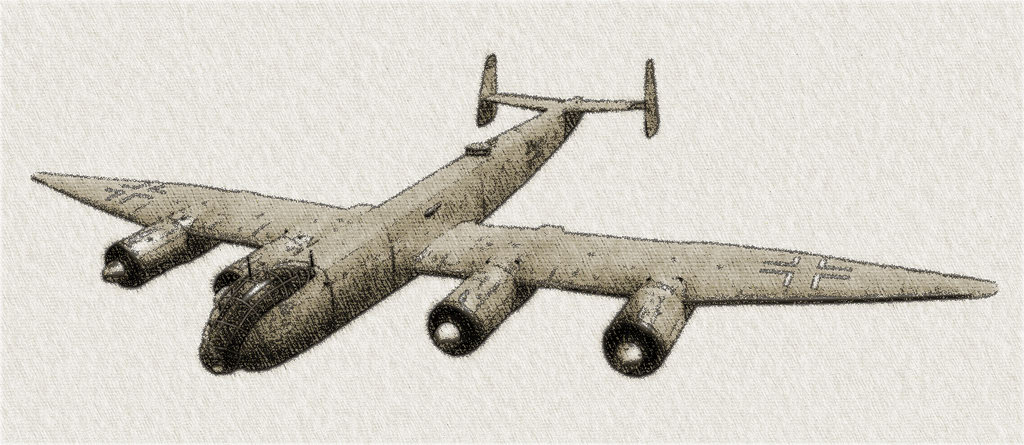Junkers Ju 488
Junkers conceived the Ju 488 in 1943 as a stopgap long-range heavy bomber until the Focke Wulf Ta 400 could enter service. Most of its design would re-use sub assemblies from the existing twin-engined ’88 series, the Ju 188, Ju 288, and Ju 388 (especially its cockpit). These would be mated to new inner wing panels fitted with two more engines and an additional midsection fuselage assembly. The result would be a sleek aircraft with a length of 20.34 metres (66 ft 9 in) and a wingspan of 30.87 metres (101 ft 3 in).
A contract for ten prototypes was placed with the first, V.401, being a shell airframe having no operational equipment. The first representative prototype would be V.403.
Junkers were too busy to undertake the detailed design and manufacture themselves so they subcontracted it out across French companies Latécoère, Bréguet and SNCASE, with V.401 being built by Bréguet at Toulouse.
The airframe was based on the Ju 188, using the tail unit of the Ju 288. These were supplied by the regular manufacturers, while the new parts were made in France. The new wing inner sections were of parallel chord with near-duplicate engine and undercarriage installations to the Ju 188, creating a four-engined layout with four main undercarriage wheels. Fuel was carried in additional tanks in both the wing and 3 metres (9 ft 10 in) fuselage extensions.
V.401 was still unfinished when it was destroyed on the night of 16-17 July 1944, in a raid by the French Resistance. Toulouse was liberated the next month and the project ended.

Junkers Ju 488 sketch Attrib: Perozopeligroso 
Junkers Ju 488 V.401 components under construction 
Junkers Ju 488 under construction, with the wigs being added 
Junkers Ju 488 V.401 under construction 
Junkers Ju 488 V401 after the sabotage of July 16-17 1944 
Junkers Ju 488 V401 after the sabotage of July 16-17 1944 
Junkers Ju 488 V401 after the sabotage of July 16-17 1944
